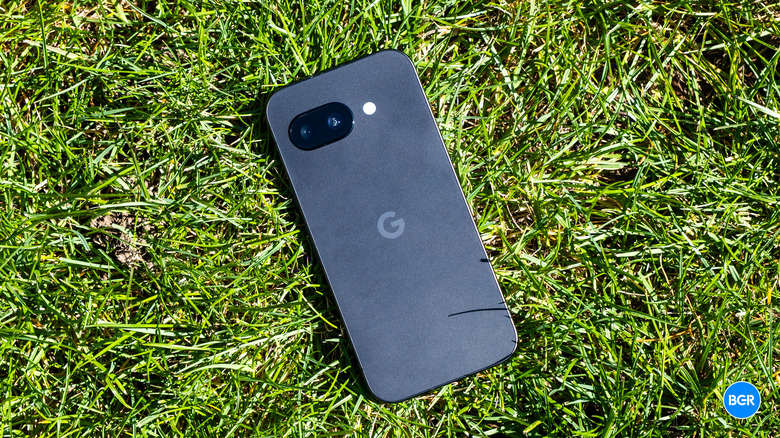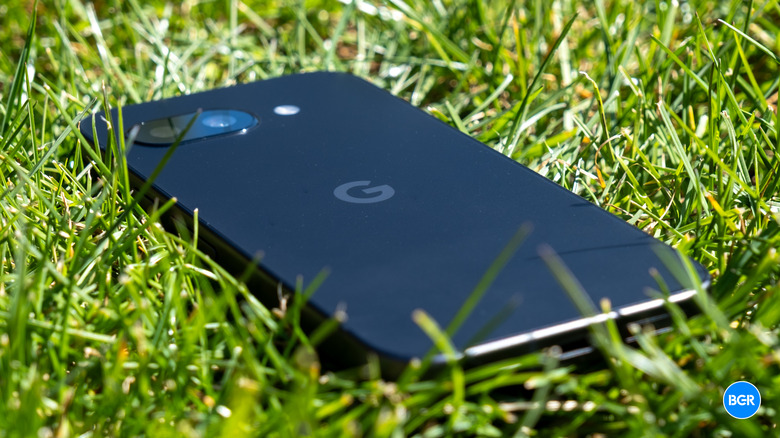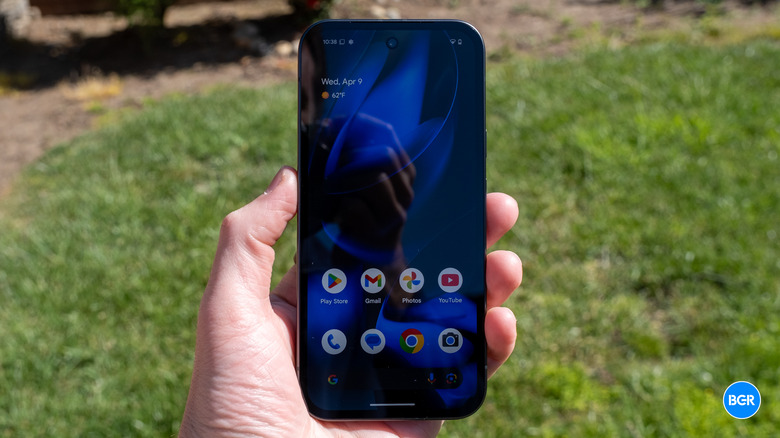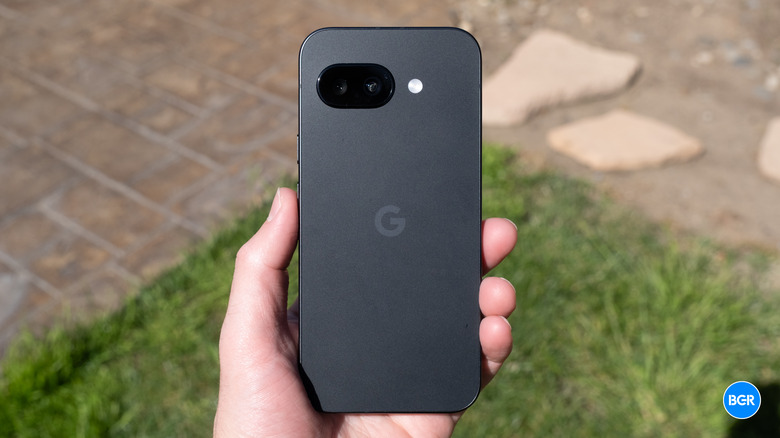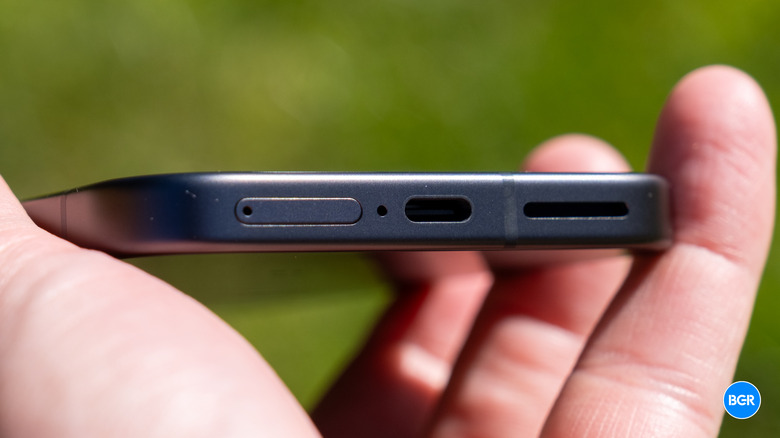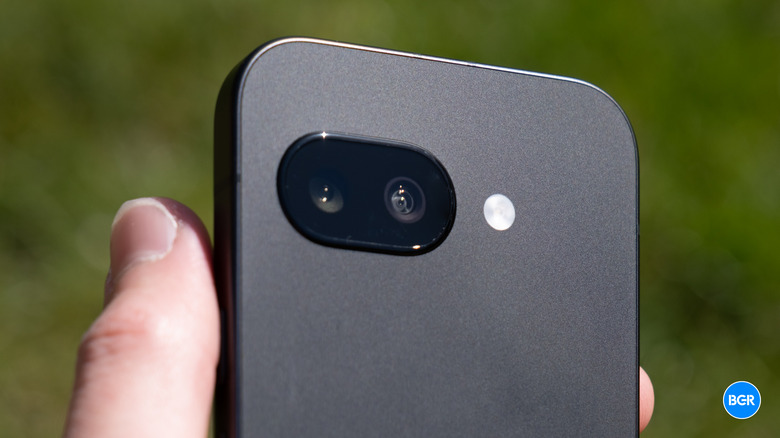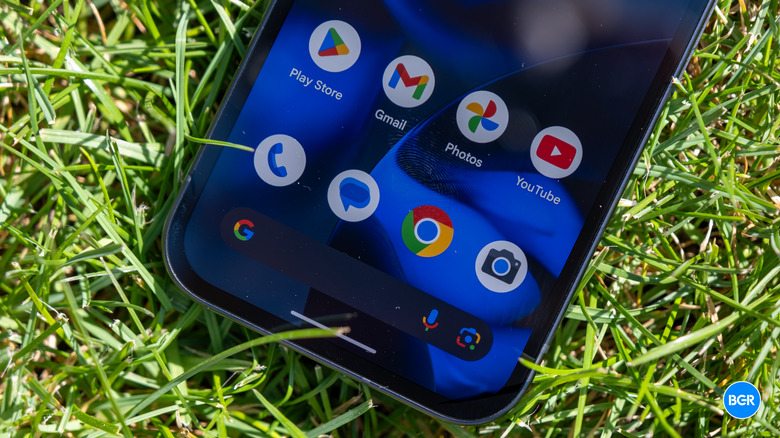Google Pixel 9a Review: Tougher Competition, But Still The Midrange King
- Sleek design with flat back
- Solid camera
- Good battery life
- Great performance for the money
- No telephoto camera
- Tensor series could still be better
| Buy From | List Price | Sale Price | |
|---|---|---|---|
| $499 | $499 | See It | |
| T-Mobile | $499 | FREE | See It |
Google is taking a slightly different direction with its budget A-series phones. The new Google Pixel 9a continues to offer similar performance and features as its mainline devices, but unlike the Pixel 8a before it, which aimed to offer a similar design, the Pixel 9a switches things up a little, with a design that does away with perhaps the most unique thing about the Pixel series — the camera bar.
Apart from that change, though, the Pixel 9a still aims to deliver on Google's promise of the best of Android but at a lower price. The phone has to go up against increasingly tough competition, including from the likes of Nothing, which recently launched the Nothing Phone (3a) Pro, both of which are excellent devices in the same price range.
Does the Google Pixel 9a do enough to set itself apart from the competition, or is Google's dominance in the mid-range smartphone world starting to slip?
Google Pixel 9a specs
| Dimensions | 6.1 x 2.9 x 0.4 inches |
| IP rating | IP64 |
| Display resolution | 1084 x 2424 pixels |
| Display size | 6.8 inches |
| Display type | pOLED |
| Display refresh rate | 120Hz |
| Display brightness | 2700 nits peak |
| Chipset | Google Tensor G4 |
| Memory | 8GB |
| Storage | 256GB |
| Rear cameras | Wide: 48MP, f/1.7, OIS Ultrawide: 13MP, f/2.2, 120-degree |
| Video | 4K 60fps |
| Front camera | 13MP, f/2.2 |
| Ports | USB-C 3.2 |
| Battery size | 5,100mAh |
| Charging | 23W wired |
| Connectivity | Bluetooth 5.3, Wi-Fi 6E, 5G |
| Colors | Obsidian, Porcelain, Iris, Peony |
| Price | $499 |
Google Pixel 9a review: Design
The design changes to the Pixel 9a are perhaps some of the most notable differences between it and previous generation A-series Pixel phones. The biggest and most obvious change is that the Pixel 9a completely does away with the camera bar, which has been a signature design element of the Pixel for a number of years now.
That said, the Pixel 9a's camera design is just as notable, but for a different reason — it's almost completely flush against the back of the phone, reversing the many years of increasingly large camera bumps that we've seen from all different phone manufacturers.
I think it looks great, and I'm glad to see someone attempting to blend the camera module back into the rear of the phone. There are trade-offs to this design choice, though, like the need to use smaller camera sensors and lenses, but at least from a design perspective, it's a neat choice.
The rest of the design of the phone is more or less to be expected, but in a good way. The phone feels very premium and well-built, especially for a device in this price range. It has a sleek matte frame just like the other Pixel 9 devices. Around that frame can be found a volume rocker and power button on the right edge and a USB-C port on the bottom.
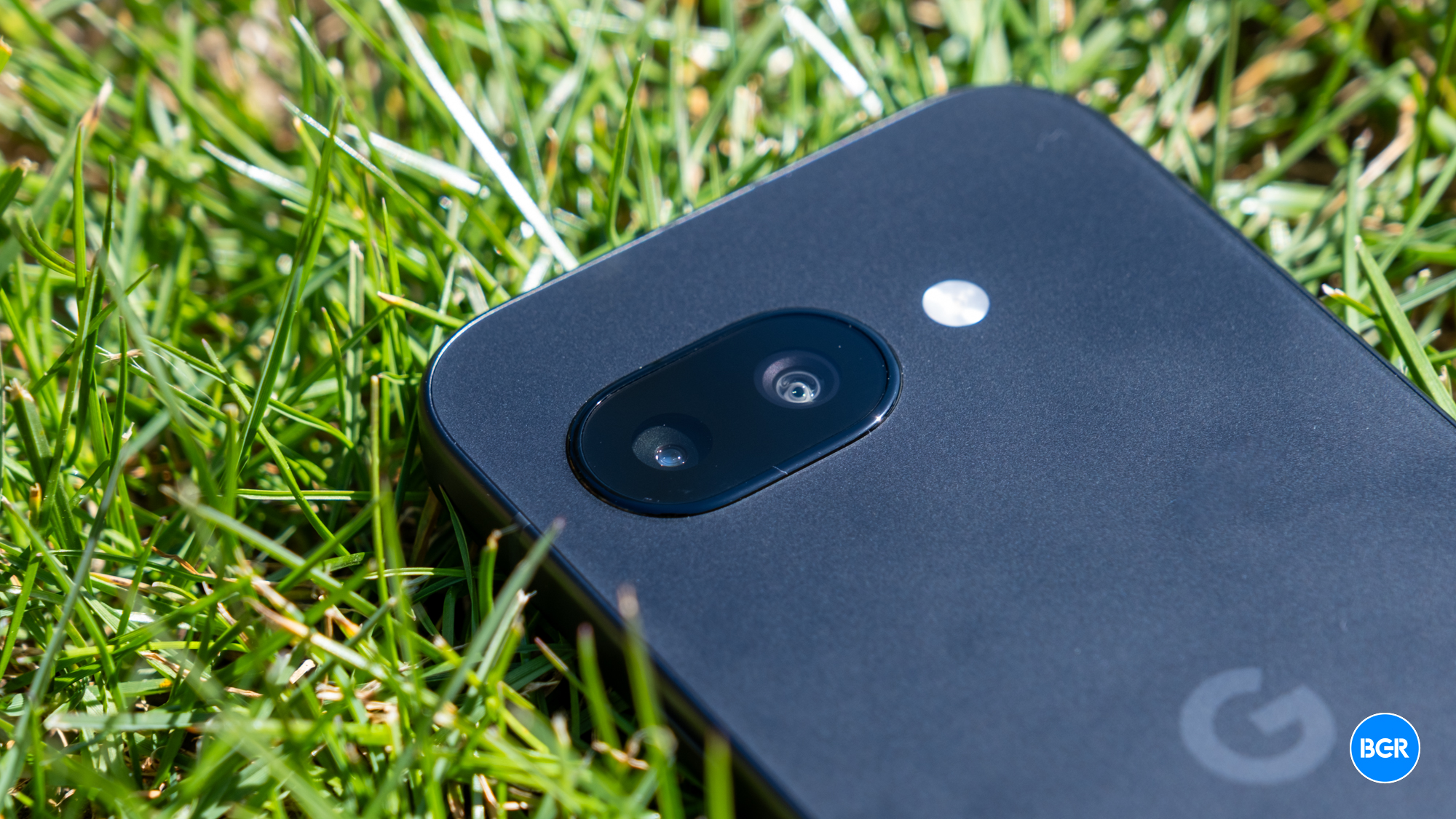
On the front, you'll find an edge-to-edge display with a pinhole cutout for the front-facing camera. The bezels around that display are a little thicker than the standard Pixel 9 phones, but I didn't really find it distracting or overly dated-looking.
The device is available in a range of color options, including Obsidian, Porcelain, Iris, and Peony. My review model is perhaps the most boring-looking of the bunch, Obsidian. I'm particularly a fan of the Iris and Peony colorways, though I haven't seen them in person.
Google Pixel 9a review: Display
The actual display on the device is quite good but not incredible. It's a 6.8-inch 1080p pOLED display, with a refresh rate that can vary between 60Hz and 120Hz. The fact that it's a 1080p display isn't necessarily an issue in this price range, nor is the fact that it's not able to range down to 1Hz like higher-end devices. I do appreciate that it's an OLED screen, though, which means that you'll get deep black levels and high levels of contrast.
Further contributing to that contrast is a relatively high brightness. The phone can hit 2700 nits peak brightness, and I found that it was easily bright enough for most use cases, including use outside. Sure, it wasn't as bright as higher-end phones, but its brightness was never an issue for me while using the phone.
Google Pixel 9a review: Performance
Like previous generation Pixel A series devices, the Pixel 9a offers the same chipset as the standard Pixel 9 devices, the Google Tensor G4 — which is coupled with 8GB of RAM. This is the same strategy that Apple takes with its budget phones, including a high-performing chipset that was used on a flagship device in its lower-cost phones. The Tensor G4 may not quite approach Apple's A-series in terms of performance, but for a phone in this price range, the Pixel 9a performs very well.
In day-to-day use, I found that the phone was easily able to handle even heavier multitasking and mobile gaming, and while it certainly heated up at times, it never felt like it was underperforming.
Crucially, the Google Tensor G4 performs better than other mid-range chips like the Qualcomm Snapdragon 7s Gen 3, which is the chipset that powers the Nothing Phone (3a) Pro. Basically, it should perform better for all kinds of tasks, including mobile gaming and productivity.
Google Pixel 9a review: Battery and charging
The Google Pixel 9a has a 5,100mAh battery, and I found that it was easily able to get me through a full day of even heavier use. I don't think I'd be able to stretch it into two full days of use, but I never worried about running out of juice by the end of a day, and those who are good at charging their device overnight will have no problems with the battery of the phone.
That's good news because the phone doesn't necessarily charge all that quickly. It charges at a maximum speed of 23W with a wired charger, and you'll have to use a compatible charger to get those speeds. The phone does support wireless charging too, but again, it's at slower speeds. You'll only get a maximum wireless charging speed of 7.5W through standard Qi charging, not the 15W supported by Qi2 devices.
Google Pixel 9a review: Camera
The Google Pixel 9a has a flush camera module on the back of the device, and it's a design choice that I love. There are some trade-offs to that choice, but the trade-offs are actually pretty minimal, which makes sense considering the fact that even though the Pixel 8a did have a camera bar, that camera bar was very slim and didn't really protrude from the rear of the phone all that much.
The main camera on the Pixel 9a is a 48-megapixel camera with an f/1.7 aperture. It's coupled with a 13-megapixel ultrawide camera. Notably missing, however, is a telephoto camera. That's something that we wouldn't have thought twice about in this price range just a few months ago, but in the past few months, Nothing released the Nothing Phone (3a) and Nothing Phone (3a) Pro, both of which have a triple camera array that includes a telephoto camera. In other words, the camera system on the Pixel 9a isn't quite as versatile as that on the Nothing Phone (3a) or Phone (3a) Pro.
Ultimately, however, the images captured by the Pixel 9a were excellent. They were colorful, vibrant, and detailed. The main camera's resolution might be a little lower than the Pixel 8a before it, but the newer cameras look more detailed in most situations, even when zoomed at the point of capture. Like the Pixel 8a, the Pixel 9a can still only zoom to 8x, and at 8x you'll notice quite a loss of detail, but less so than on the Pixel 8a.
Of course, speaking of zoom, the Nothing Phone (3a) Pro still vastly outperforms the Pixel 9a, considering the inclusion of an actual telephoto camera. At 8x, which is the Pixel 9a's maximum, the Nothing device was able to capture reasonably natural-looking photos, while those captured by the Pixel 9a were noticeably overly zoomed. That said, I found that the Pixel 9a captured better detail and more vibrant colors at low levels of zoom.
All that to say that the Pixel 9a has a great camera system built into it. I hope that Nothing's inclusion of a telephoto camera signals that other phones in this price range will get a triple-camera system soon too. If you take a lot of zoomed photos, you'll find that the Nothing Phone 3a Pro performs better. But in day-to-day situations, I prefer the photos captured by the Pixel 9a.
Google Pixel 9a review: Software
The software experience on the Pixel 9a is pretty much what you would expect. That's to say it's excellent. This isn't necessarily the stock Android that some label the Pixel series as offering, but it is Android as Google wants it to be. Everything is more or less where you would expect it to be, and the phone has some additional design elements that make it more unique. I've long loved how the Pixel series approaches software, and that continues here.
As you would expect, the Pixel 9a has a number of AI-based features that you may or may not find useful. For example, the digital assistant built into the device is Google's Gemini, and it now leverages Gemini 2.0 Flash, which is built to offer more accurate responses. Gemini 2.0 Flash is free for all Gemini users, but paid users of Gemini Advanced will be able to access the more powerful Gemini 2.5 Pro. The device also has other AI-powered features like the ones you would expect in the Google Photos app. Not much is necessarily new for the Pixel 9a specifically, but it all works pretty well on the device.
Conclusions
The Google Pixel 9a is more of the same, in a good way. It performs very well for a phone in this price range, plus it has an excellent software experience, a great camera, and helpful features. That's not to mention the new design, which some argue makes the Pixel 9a less unique, but I actually think helps make it stand out more in a sea of phones with massive camera modules. The Pixel 9a is a perfect example of why the mid-range smartphone market is seriously heating up — and I'm here for it.
The competition
Perhaps the biggest competition to the Pixel 9a right now comes in the form of the Nothing Phone (3a) Pro, which is in a similar price bracket. There are pros and cons to all of these devices. Those who want better performance and a more consistent software experience should go for the Google Pixel 9a. However, those who want a more versatile camera will find the Nothing Phone (3a) Pro to be the better device, considering the fact that it has a telephoto camera built into it.
Should I buy the Google Pixel 9a?
Yes, it's an excellent phone for $500 or less.
